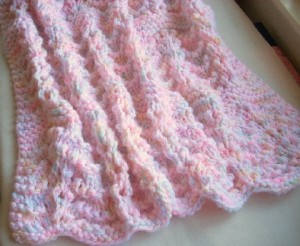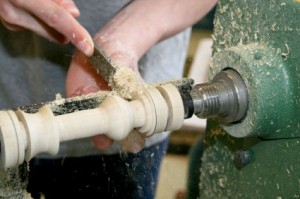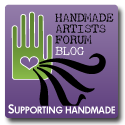There is always discussion about what is and isn’t handmade. Dictionary.com defines handmade as “made by hand, not by machine, especially with care or craftsmanship .” But even that definition has changed as times have changed.
 Back in the pioneer days, handmade was just that… made with your hands. There was no electricity, and there were no machines. So if you needed something, you devised a way to make it using your hands and little else. If you needed a blanket, you killed a bear or a buffalo, skinned it, tanned the hide, and covered yourself with it for warmth. But humans have always been resourceful, so “handmade” got easier.
Back in the pioneer days, handmade was just that… made with your hands. There was no electricity, and there were no machines. So if you needed something, you devised a way to make it using your hands and little else. If you needed a blanket, you killed a bear or a buffalo, skinned it, tanned the hide, and covered yourself with it for warmth. But humans have always been resourceful, so “handmade” got easier. People migrated into cities with the industrial revolution. Those still on the farm still raised their own sheep, sheared them, spun the wool and then knitted the blanket. But people who had moved to the cities still had these skill, just nowhere for the sheep. And the factories found a way to take that raw wool, spin it and sell it so the city-dwellers could still knit themselves a blanket. Certainly, the blanket on the farm that had been made from home-grown wool was just as handmade as the blanket knit from manufactured wool.
People migrated into cities with the industrial revolution. Those still on the farm still raised their own sheep, sheared them, spun the wool and then knitted the blanket. But people who had moved to the cities still had these skill, just nowhere for the sheep. And the factories found a way to take that raw wool, spin it and sell it so the city-dwellers could still knit themselves a blanket. Certainly, the blanket on the farm that had been made from home-grown wool was just as handmade as the blanket knit from manufactured wool. 
As time progressed, the factories started turning out finished blankets. Now, there was no need to take the time to knit or crochet that blanket… why bother when you could purchase one at a local store and spend your time doing something else. But people continued to make blankets by hand; they still had the skills and enjoyed doing it. The handmade blankets included an element that the factory-made blankets never would – the thought, planning and care of the creator.
 The same applied to wood craftsmen. They didn’t have to sand by hand with a piece of sandpaper anymore. The could plug a handy tool into an electrical outlet and accomplish the same thing in a fraction of the time. No less care went into the finished piece. The only difference was that the finished piece was completed faster.
The same applied to wood craftsmen. They didn’t have to sand by hand with a piece of sandpaper anymore. The could plug a handy tool into an electrical outlet and accomplish the same thing in a fraction of the time. No less care went into the finished piece. The only difference was that the finished piece was completed faster.Handmade today can employ the assistance of many machines in the process. The fiber artist probably owns a sewing machine. The woodworker owns a lathe or a powered sander or a router or all of these tools. The metalsmith probably owns a grinder; the potter an electric kiln. Are these things still handmade? I would argue emphatically yes! The finished products are not “made by machine.” The machines used are merely tools in the hands of the artist, regardless of the medium. Perhaps it isn’t “handmade” that’s evolved, but the tools employed in the creation of that which is handmade in the 21st century.
How has your skill evolved from the “old days?”










No comments:
Post a Comment